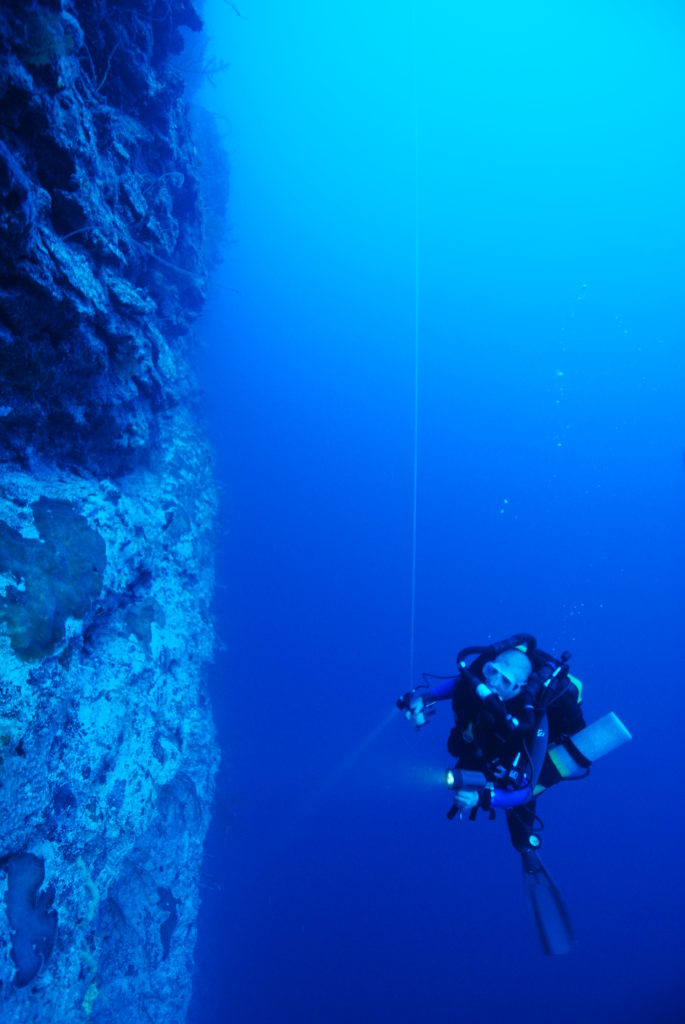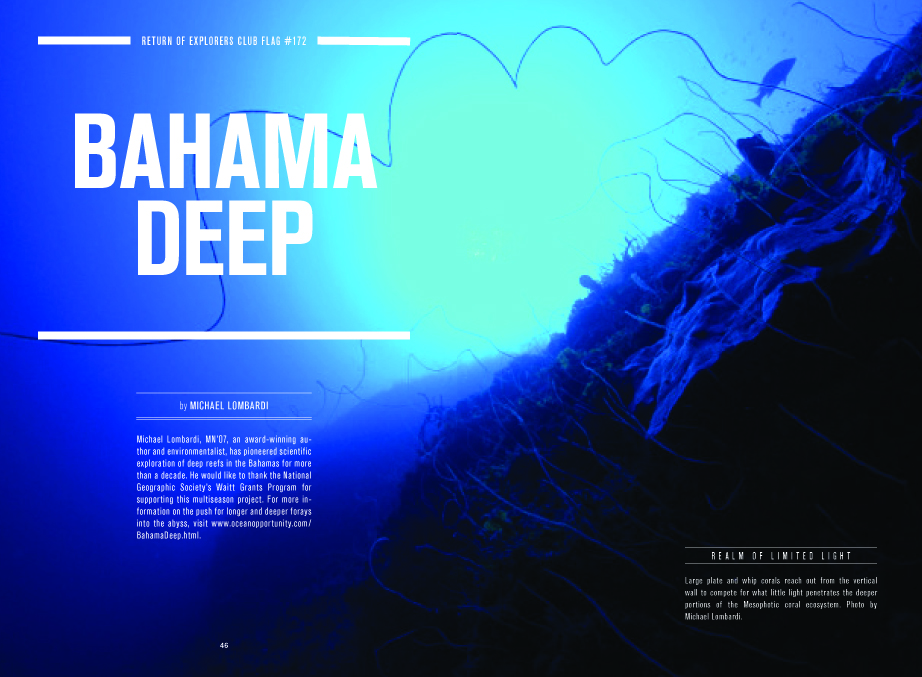
the 9th minute
Our first exposure to the deep mesophotic coral reef ecosytem was in 2002 during what was among the first uses of mixed-gas for scientific diving within NOAA’s Undersea Research Program. The work was conducted along the deep vertical fore-reef lining Exuma Sound in the Bahamas.
In just 8 short minutes at a depth of 300 fsw (90 msw), a dozen new species of marine sponge were discovered. According to the University of Mississippi, more than half of these revealed bio-activities of interest in the search for cures for cancer, HIV, diabetes, and other human disease. This pivotally inspirational moment catalyzed our thirst to advance human intervention of deep and difficult to reach ocean environments. This ongoing quest, for “the 9th minute” remains a priority.
in Bahama Deep
As a follow on, from 2010 through 2012, we coordinated three field expeditions to explore and document the natural history of the deep vertical reefs of the Bahamas. Work was conducted in both Exuma Sound and the Tongue of the Ocean, with more than a dozen person dives made in excess of 120 msw, to a maximum of 131 msw (446 fsw). The project succeeded in developing new methods for human intervention of the mesophotic coral ecosystem’s lower limits, and with great productivity.
While the work was conducted using mixed-gas closed circuit rebreathers (CCRs), the practical limits of this technology alone were realized, providing the impetus to develop our Ocean Space Habitat technology. These few short projects continue to produce results through scientific and popular publication, as well as inspiring new technology development.
The projects were funded by Lombardi Undersea LLC and the National Geographic/Waitt Grants Program, with support from the University of Connecticut at Avery Point, Subsalve USA, the Bahamas Marine EcoCentre, Small Hope Bay Lodge, the Perry Institute for Marine Science, Shearwater Research, and Molecular Products.
More information…
.: Nat Geo On Assignment video
.: National Geographic Explorers Symposium presentation
.: New species of fish discovered
.: Life on the Edge [poster download]


